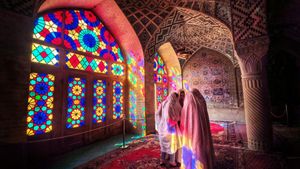For many people, witnessing the Aurora Borealis—often referred to as the Northern Lights—is not just a fleeting interest; it’s something akin to checking off the ultimate bucket list item. Imagine the scene: swirling blends of bright greens, purples, and pinks streak across the night sky, painting it like the work of some celestial artist. Reminding viewers of the magnificent routines of nature, the spectacle is pure magic. And recently, stargazers found themselves doubly lucky, being treated to this natural wonder alongside the majesty of shooting stars, thanks to the annual Perseid meteor shower.
This immense show of lights occurred on the night of August 12, 2024. A substantial coronal mass ejection from the Sun—think of it as a giant burp of solar particles—resulted in heightened auroral activity visible far beyond the Arctic Circle. Social media platforms lit up with awe-inspiring photos and videos as people shared their experiences of witnessing the dancing lights alongside streaks of meteors, leading to what some are dubbing "the celestial double feature of the summer."
The meteor shower during this time typically gives rise to around 100 meteors per hour, captivating those fortunate enough to be outdoors. Right when the Earth is deep within the Perseids, people are treated to the lucky chance of combining these two astronomical phenomena. An onlooker from the Grand Canyon perfectly encapsulated the moment, exclaiming on social media, "Aurora over the Grand Canyon, during the peak of the Perseids, with lightning flashes on the horizon. Does it get any more magical?”
While many people may associate the Northern Lights with far-off destinations such as Iceland or Norway, such splendor can be spotted here at home as well. Though they might not always dominate our night skies, their presence has been felt across various regions, including the Hudson Valley. Observers have been quick to defend the beauty of the lights from naysayers who dismiss their significance. A recent passionate post stated, "The Northern Lights are way more rare than your typical run-of-the-mill Hudson Valley snowstorm. Why hate on it so much? Why can’t we express excitement for such wonders?" It’s true—this celestial occurrence is not something to be taken lightly.
The Hudson Valley itself had its recent affair with the Aurora Borealis on October 10, 2024, attracting attention, photos, and complaints alike. Many locals celebrated, sharing stunning captures on Facebook and Instagram, showcasing vibrant colors against the backdrop of their familiar landscapes. But along with the delighted stargazers came skeptics—those who grumbled about the pictures flooding their feeds, equated them to commonplace seasonal snow photos, and grumbled about social media overindulgence. Such complaints, though, fail to shake the enthusiasm of constellation lovers hoping to bask in the glow.
For many, even the prospect of seeing the Northern Lights can feel like chasing a dream. Since they're influenced by solar activity—such as the recent coronal mass ejection—understanding this phenomenon helps eager enthusiasts to prepare for future sightings. Reliable sources like Soft Serve News can provide updates on auroral forecasts, allowing hopeful onlookers insights to plan their nights under the stars. It’s not so straightforward, but these forecasts are as exciting as the lights themselves, paving the way for thrilling celestial encounters.
Reflecting on previous years, the Hudson Valley has enjoyed several visits from the Northern Lights. Whether caught on camera or merely felt as a sense of wonder, these moments stay etched in the memories of those who witnessed them. Here’s hoping for clear skies and stunning auroras, lighting up the depths of night!
Besides the breathtaking allure of the Aurora Borealis, meteor showers stand as another highlight of summer nights. The Perseids, known for producing bright meteors and high visibility, come as the Earth crosses the debris left by Comet Swift-Tuttle. This cosmic dust manifests as streaks of light across the sky, each appearing as fleeting, beautiful moments streaking through the darkness. Planning the right time for viewing is part of the fun: typically peaking from August 11 to August 13, with the best visuals being seen away from the light pollution of urban areas.
Encounters with the night sky can be transformative, whether it’s the Northern Lights illuminating the horizon or meteors seemingly racing against time. Each individual experience brings unique beauty, inspiring not just stargazers but everyone to look up and appreciate the vastness above. The recent overlapping of the auroras and meteor showers reminds us of the compelling connection so many people share during these awe-inspiring moments.
Those invested have often remarked on how the night sky compels us to reflect on life, imagination, and hopes. Coupled with the reality of nature’s wonders, moments spent under the stars affirm our place within something much larger than ourselves. So, as more displays of these natural wonders take us by surprise, perhaps we can all agree to share our joy rather than grumbling about others’ excitement.
Now, with the seasons changing and autumn approaching, the promise of more nights filled with celestial events looms on the horizon. Interested parties, whether veteran astronomers or curious onlookers, should stay attuned to the latest weather forecasts and solar activity reports. Whether you set out to catch dinner or are simply hoping for another glimpse of the spectacular, each outing could lead to unexpected delights illuminating the sky.
So, the next time the lights or meteors paint the sky, be sure to grab your camera, surround yourself with friends or family, and step outside. Let’s embrace every scintillate and twinkling light together, encouraging one another to marvel at what the universe offers, if only for one fleeting moment.



